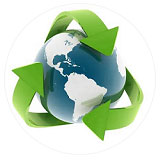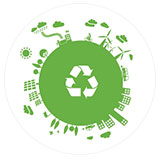Deprecated: Creation of dynamic property OMAPI_Elementor_Widget::$base is deprecated in /home4/weeecare/public_html/wp-content/plugins/optinmonster/OMAPI/Elementor/Widget.php on line 41
FAQS
- HOME
- FAQS
FAQs
The Ministry of Environment, Forest and Climate Change notified the E-Waste Management Rules, 2016 on 23 March 2016 in supersession of the e-waste (Management & Handling) Rules, 2011. It is applicable to all producers who were producing products prior to 1st October, 2016. New producers, who planned or are planning to set up their business post 1st October 2016, have to obtain EPR authorization before commencing their business.
As the third party manufacturer does not own the brand, it would not come under the umbrella of EPR regulation. The responsibility of a third party manufacturer would be limited to only discarded e-waste generated at its plant or factory.
Yes, all producers need to apply afresh for authorization as per the new e-waste rules, 2016.
Yes, complying with the new E-waste Rules, 2016; all transportation of E-waste have to follow the manifest system mandatorily.
A producer should have the technical documents related to RoHS compliance. They can submit the declaration to CPCB that they have maintained the technical documents. It is not mandatory to submit such documents to CPCB.
Components or parts required for electrical equipment which have entered marketplace prior to 1st May, 2014 are exempted from the provisions of RoHS under the sub-rule (1) of rule 16 provided that Reduction of Hazardous Substance compliant parts and spares are no longer available.
In this case, the producer has to obtain all applicable approvals as per the revise E-waste Rules, 2016. It is mandatory to make EPR more effective and target based. The deposit and subsequent return to the customer come under the authority of NBFC activity and hence approvals are required from the Reserve Bank of India. On the top of this, the producer has to agree on a suitable rate of interest to be offered to customers so that they feel incentivized to return the EEE to the producer.
The sub-Rule 1 of Rule 16 is regarding Reduction of Hazardous Substances (ROHS) in the items cited in Schedule I. Nowhere in the E-waste Rules it is mentioned that any item listed in Schedule I is exempted from the application of these E-waste Management Rules, 2016. As fluorescent and other mercury-containing lamps are listed in Schedule I as CEEW5, the producers of such items have to comply with the provisions of E-waste (Management) Rules, 2016 as well with the Schedule II with respect to RoHS.
In such case, producers can provide a roadmap to CPCB to be fully compliant at a planned future date. It is recommended to meet RoHS compliance within six months after providing this plan.
The unit for calculation for waste generation and target is – Weight, and the same has to be stated in the form for filing annual returns to Central Pollution Control Board.
It is 30th June of every year.
Producers need to file their quarterly return after completion of every quarter with CPCB.
Want to know more?
Please feel free to contact us for more information







